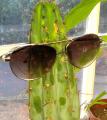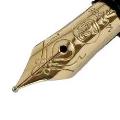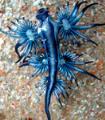
huachumancer
Posts: 1285 Joined: 02-Aug-2008 Last visit: 24-Jun-2025 Location: earf
|
someone mentioned they have psychoactivity, but i dont know how that would make sense since morning glory seeds have a fungal occupant that is the source of the lsa. so if the leaves are active they are either 1 alternate source of lsa 2 not lsa yet psychoactive
anyone care to elaborate?
perhaps in conjunction with the seeds the leaves make a fine combo, something weve been missing out on.
what if were to lets say ingest teh entire plant fresh seed pods, leaves and all. different from just the seeds maybe?
|
|
|
|
|
DMT-Nexus member
Posts: 465 Joined: 18-Jan-2008 Last visit: 09-Nov-2025
|
I have quidded MG leaves once or twice; produced a very definite stimulation that tailed off at about six hours if I remember right. mistakes were made
|
|
|
DMT-Nexus member
Posts: 28 Joined: 21-Jul-2010 Last visit: 10-Oct-2015 Location: Europe
|
Hi Mew, I recently read an scientific thesis about turbina corymbosa (ololiuqui).
The main point is: LSA & friends are produced by a fungus, that lives on the leaves.
When the plant matures, the alkaloids concentrate in the seeds.(plants don´t produce ergolines)-
I guess (speculation), this is the same principle with morning glory & HBWR.
I will search the article & post it later
|
|
|

DMT-Nexus member
Posts: 1453 Joined: 05-Apr-2009 Last visit: 02-Feb-2014 Location: hypospace
|
be careful, there are other things in the plants aside from the interesting alkaloids that can have negative effects.
|
|
|
DMT-Nexus member
  
Posts: 196 Joined: 15-Jan-2013 Last visit: 09-Feb-2024 Location: paradise
|
If I'm understaanding it right that fungal occupant is an endophyte that lives in the spaces in between cells inside of the plant rather than on its surface. Corrections to my understanding are always welcomed and encouraged.
I'd love to learn more about the turbina paper mentioned above.
|
|
|

DMT-Nexus member
 
Posts: 12340 Joined: 12-Nov-2008 Last visit: 02-Apr-2023 Location: pacific
|
I never heard that it was a symbiotic fungus that produces the LSA before..new to me. Thats interesting. Long live the unwoke.
|
|
|

DMT-Nexus member
Posts: 1310 Joined: 27-Sep-2012 Last visit: 01-Feb-2022 Location: Lost in space
|
So if there is in fact fungus on the seeds, could it be cultivated? I'm guessing its growing preferences may be too specialized, but it would be interesting to grow the fungus and not have to be dependent on seeds. Be an adult only when necessary.
|
|
|

DMT-Nexus member
Posts: 3207 Joined: 19-Jul-2011 Last visit: 02-Jan-2023
|
Mr.Peabody wrote:So if there is in fact fungus on the seeds, could it be cultivated? I'm guessing its growing preferences may be too specialized, but it would be interesting to grow the fungus and not have to be dependent on seeds. i was thinking the same thing. acid fungus and psilocybin shroom tanks side by side  . i would imagine you could use morning glory as a substrate (would purpurea work?) no matter how specialized.. my question would be how would you measure out the initial doses  My wind instrument is the bong
CHANGA IN THE BONGA!
樹
|
|
|

DMT-Nexus member
Posts: 68 Joined: 17-Sep-2012 Last visit: 13-Feb-2018
|
Keeper Trout wrote:I'd love to learn more about the turbina paper mentioned above. MoonMan79 mentioned a "scientific thesis" ... searching the ProQuest database, I didn't see any particularly promising results. The closest I found was: Hong, Soobok Lee. 1983. Part I: Genetics and ergoline alkaloid formation in Penicillium roquefortii Thom. Part II: Biosynthetic studies on ergoline alkaloid production in morning glory plants. PhD Thesis, Purdue University.But I don't think that's it. I can't confirm that definitely, since I don't have access to an institution with a full ProQuest subscription (and theses are expensive). I suspect that MoonMan79 was actually referring to this paper: Markert, A. et al. 2008. Biosynthesis and accumulation of ergoline alkaloids in a mutualistic association between Ipomoea asarifolia (Convolvulaceae) and a Clavicipitalean fungus. Plant Physiology 147(1): 296-305. doi: http://dx.doi.org/10.1104/pp.108.116699And lucky for us, it's available in PDF form free of charge from the journal that published it: http://www.plantphysiol..../147/1/296.full.pdf+html
|
|
|
DMT-Nexus member
  
Posts: 196 Joined: 15-Jan-2013 Last visit: 09-Feb-2024 Location: paradise
|
A common problem with fungal endophytes is they are sometimes so highly adapted for life inside of the interstitial spaces within their host they can present challenges for culturing outside of the host. Its apparently easy to kill the endophytes in some cases like morning glory seeds by use of a fungicide when planting (said to render the entire plant alkaloid free) Growing it appears to be more challenging.
In some instances such as the endophytic fungus from Taxus that was proven responsible for producing taxol, it was found problematic to culture for commercial taxol production but in the course of research workers have discovered a number of other taxol producing endophytes in other plants, at least one of which is showing promise for cultivation. There was at least one interesting paper looking at host specificity of morning glories by artificially inoculating them with Balansia or with a Claviceps.
An increasing number of plants are being shown to rely on endophytes for synthesizing their alkaloids. Due to the resources required for financing this sort of research the subjects have been mostly limited to highly valuable commercial chemo or other pricey medicinal alkaloids like podophyllin. Some exceptions exist like Ipomoea and there is also the study of the fungal endophyte Balansia inside of the piri-piri Cyperus species.
I'm actually at the point of wondering if there are ANY plants have been proven to make their alkaloids using their own DNA (I would like to think there are?). In the cases where sequencing of biosynthetic machinery has occurred (like has occurred for Phalaris aquatica) I have not yet located an experimental account that would not have spun down the endophyte DNA along with the host DNA during purification.
I've been asking a lot of mycologists, botanists and chemists this question for around a year or so now and have encountered much discomfort with the question but no answers.
There has been a fair bit of work in the area of morning glories since this was noticed. I'll post either references to that literature or links to the papers as soon as I have a chance to assemble something and get back here.
And there is at least one published account of the akaloid levels in different parts of Ipomoea violacea (I don't count Mary Jane Superweed as a reference even though that was the very first place I encountered the claim that the leaves were extractable). Genest *might* have been the author but I'm going to have to get to my storage unit and into my file cabinets of journal articles to locate the right paper.
|
|
|
DMT-Nexus member
Posts: 1104 Joined: 17-May-2009 Last visit: 18-Jul-2023
|
Quote:Hi Mew, I recently read an scientific thesis about turbina corymbosa (ololiuqui).
The main point is: LSA & friends are produced by a fungus, that lives on the leaves.
When the plant matures, the alkaloids concentrate in the seeds.(plants don´t produce ergolines)-
I guess (speculation), this is the same principle with morning glory & HBWR.
I will search the article & post it later Fascinating. I never knew this. This opens a spectrum of questions for me: Do all Morning Glory, Ololiuhqui & HBWR specimens contain these symbiotic fungi? If I grow a Morning Glory plant from seed, will they contain this fungus? Or would I need to fetch it? I assume then that the MG & Ololiuhqui plants' enzymes produce some simple Amine molecule, which this fungus then enzymaticaly converts into LSA? If so perhaps it is possible to feed the plant alternative neutrients, so the end product would become a novel, alternate of LSA? Also, these particulair fungi that live inside the LSA bearing vines... Could they be kept alive in some kind of growth medium in a terrarrium, instead of in between the cell spaces of the LSA vines? A terrarium that mimics the conditions of these in-between-cell-spaces. Could that work? Would be a pretty fascinating way to try & biosynth novel ergine-sructures, by feeding the fungi-infested substrate with various different simple amines * tryptamines. And finally a wild flight of thought: Could other plants be "infected" and lead to live in symbiosis with this fungus found in the LSA bearing vines? Other plants that make simple amines & tryptamines, when infected with this fungus might start making interresting novel Ergines. infected with a fungal symbiote
|
|
|
DMT-Nexus member
  
Posts: 196 Joined: 15-Jan-2013 Last visit: 09-Feb-2024 Location: paradise
|
While the comment does appear in print that the fungus is observable on the leaves, fungi don't typically live on surfaces but rather form fruiting structure on surfaces and those reproductive structures are commonly thought to be the fungus. I'd think that to be the case here too?
See the second paper below concerning that last question above.
A couple of papers of potential usefulness (their references can lead into the larger body of work)
Sabine Kncht et al. (2004) Planta 219: 619-625. Elimination of ergoline alkaloids following treatment of Ipomoea asarifolia (ConvolvulaceaeJ with fungicides
Mahalia A. Ahimsa-Muller et al. (2007) J. Nat. Prod. 1955-1960. Clavicipitaceous Fungi Associated with Ergoline Alkaloid-Containing Convolvulaceae
|
|
|

DMT-Nexus member

Posts: 1711 Joined: 03-Oct-2011 Last visit: 20-Apr-2021
|
There's a few nice pictures of clavicipitaceous mycelium in the preview of an article, by the same authors of the paper Morris Crowley shared, in the Fungal Ecology Journal here. Alas, I don't have access to the full publication. "The Menu is Not The Meal." - Alan Watts
|
|
|
DMT-Nexus member
  
Posts: 196 Joined: 15-Jan-2013 Last visit: 09-Feb-2024 Location: paradise
|
That's really cool. Those sure don't look endophytic the way the mycelium is adhering to the cell surfaces (Obviously the hyphae penetrates the cells in order to feed). The article uses the word Epibiotic which I had not encountered before.
I'll focus on getting that article, thanks for posting that link!
Their comment about them probably being symbiotic seems true for endophytes also. Their presence in grasses for example often confers extreme drought resistance. The interdependence of different life forms living in or on each other is something really fascinating me at present.
Also to offer a suggestion for the question about how to dose extracted LA, Shulgin's approach of starting low and working up gradually until establishing an active dose is obviously always the safest ideal but in this case it might be mentioned that a guideline offered in drug culture publications encountered in my youth suggested starting with a weighed 10 mg of that yellow-grey goo and adjusting from there.
That worked for me anyway although it is not a substance I've felt compelled to ingest since I was a teenager in the 1970s.
|
|
|

DMT-Nexus member
Posts: 336 Joined: 01-Jul-2011 Last visit: 29-Jun-2024 Location: Gaia
|
very interesting thread. i think i found the whole paper you guys wanted, it was already posted somewhere else on the internet  and i would like to see this thread to keep developing as it is now. some very interesting thoughts here. edit : thanx for sharing the paper vodsel, i have always wanted to see these fungi formations that live in symbiosis with the plant.
|
|
|

catdestined
Posts: 356 Joined: 08-Nov-2012 Last visit: 16-Feb-2023 Location: felinity
|
what makes the seeds most potent? why not any other part of the plant if the fungus is coexisting throughout it (as was noticed with the leaves) achuma puma
|
|
|
DMT-Nexus member
  
Posts: 196 Joined: 15-Jan-2013 Last visit: 09-Feb-2024 Location: paradise
|
Good question. I can't say that I know but I can toss out a musing on it:
A common notion is alkaloids serve plants by discouraging predation. If true a seed might merit more protection than a leaf but I tend to doubt life is really that thought out. It might just be a better substrate for the fungus and provide a richer source of precursors or nutrition.
Thanks for that post Ambivalent!
|
|
|
DMT-Nexus member
Posts: 28 Joined: 21-Jul-2010 Last visit: 10-Oct-2015 Location: Europe
|
Sorry, for let you wait regarding the source. I have attached the original thesis from Sabine Hellwig, which is not in english, but in german  Not to easy to understand, but if you can read it, you will find a lot more detailed informations than in the Mini-review Ergoline alkaloids in convolvulaceous host plants originate from epibiotic clavicipitaceous fungi of the genus Periglandula Ulrike STEINERa, Eckhard LEISTNERb,*
|
|
|

The Root
 
Posts: 2458 Joined: 02-Jul-2008 Last visit: 27-Sep-2023 Location: The asteroid belt
|
i blended up 3 entire vines with unripe seedpods of mghb excluding the roots with some oj that was the most fowl, foamy and fiercely effective (in so many ways) glass of oj could this action be handled mycorrhizal fungus ? if the fungal partner is external and is required how does it get there (rides along in the seedpod ?, common airborne spore ?) i have grown rivea for many years so i can test any theories suggested antrocles wrote:...purity of intent....purity of execution....purity of experience...
...unlike the "blind leading the blind". we are more akin to a group of blind-from-birth people who have all simultaneously been given the gift of sight but have no words or mental processing capabilites to work with this new "gift".
IT IS ONLY TO THE EXTENT THAT WE ARE WILLING TO EXPOSE OURSELVES OVER AND OVER AGAIN TO ANNIHILATION THAT WE DISCOVER THAT PART OF OURSELVES THAT IS INDESTRUCTIBLE.
Quote: ‹Jorkest› the wall is impenetrable as far as i can tell Quote: ‹xtechre› cheese is great He who packs ur capsules - controls your destiny.
|
|
|
DMT-Nexus member
  
Posts: 196 Joined: 15-Jan-2013 Last visit: 09-Feb-2024 Location: paradise
|
|